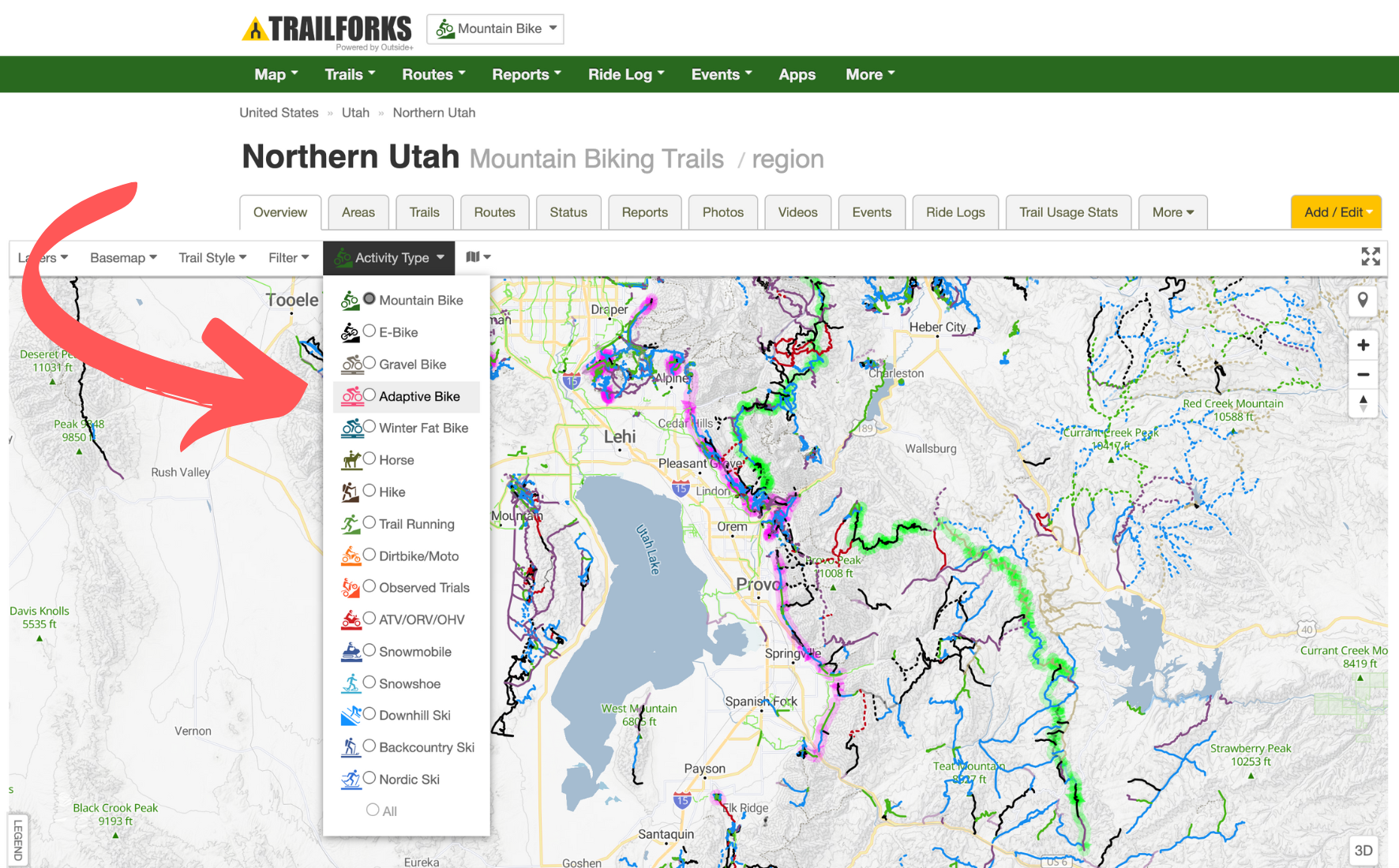Utah's Salt Lake City and Park City are blessed with some of the best access to outdoor recreation in the Mountain West and beyond. In addition to a plethora of accessible nature trails, there are lovely bike paths and dirt tracks suitable for those using adaptive equipment.
Saddle up and get ready to rock!

To get spinning we chatted with Brian Cone, a local adaptive biker who fanatically pedals around 3,000 miles per year on his mountain bike, for some general tips and advice. Brian has a wealth of knowledge about our local trails and tries to get out at least 5 days per week on his recumbent hand cycle with E-assist or his recumbent tricycle.
Brian's first recommendation for adaptive biking fun: "If you’re new to an area and feeling any hesitation, you should definitely go with an established recreation group. They can help you determine what trails will be appropriate. Then do as much research as you can before heading out. If you are an adaptive rider missing an arm, you may not be all that concerned about the same details and trail conditions that a spinal cord injury survivor might have."
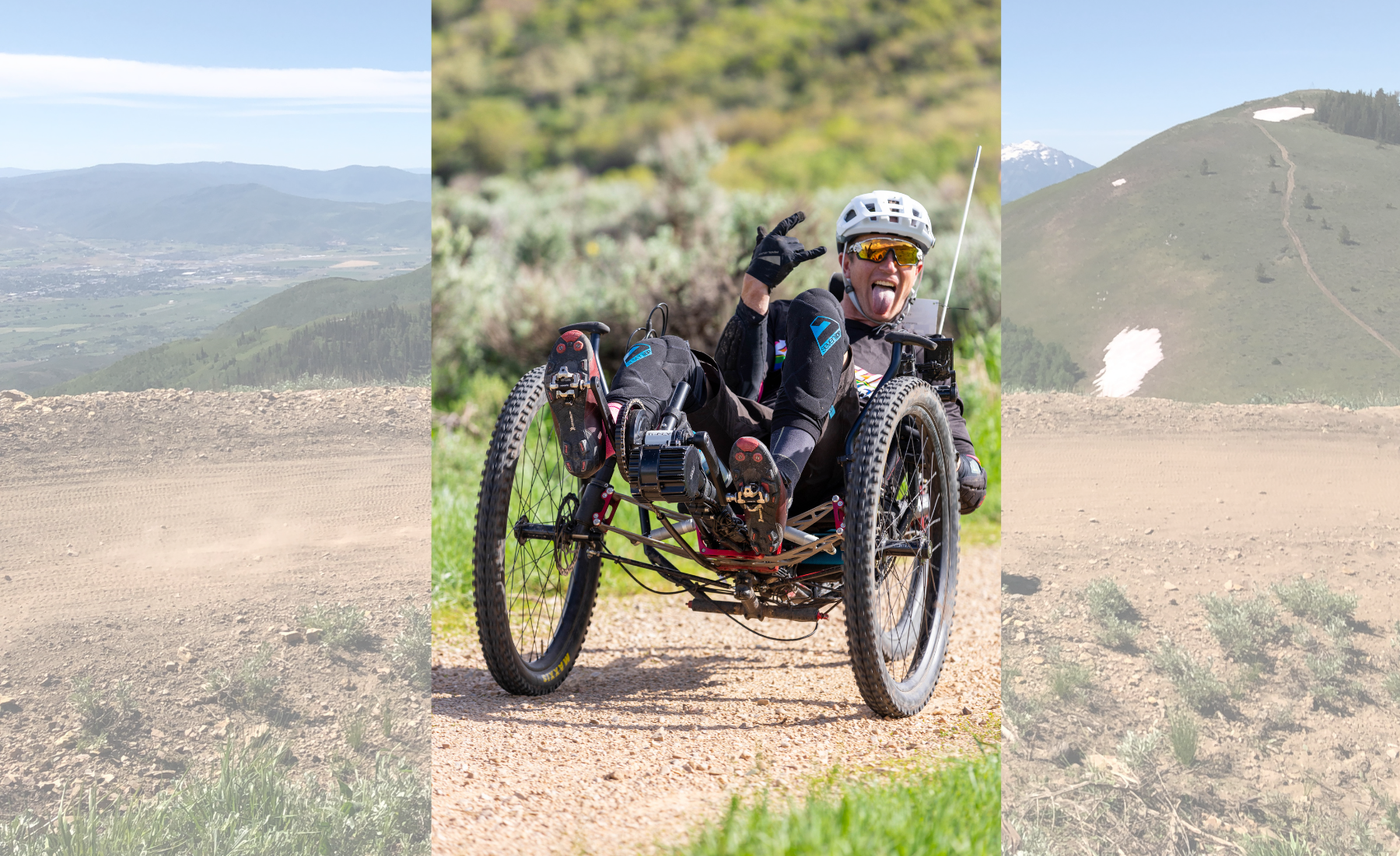
Brian shredding local trails, photo by Kristopher Braunberger
UTAH ORGS WITH ADAPTIVE PROGRAMMING
To follow Brian's advice, you can get in contact with one of the many organizations in Northern Utah that offer classes, lessons, group rides, instruction, and financial support or scholarships. Here's a comprehensive list of awesome groups that help folks with adaptive needs get outdoors to enjoy heaps of activities in addition to cycling and mountain biking.
- Ogden Valley Adaptive - Click Here
- Trails Adaptive - Click Here
- Wasatch Adaptive Sports - Click Here
- National Ability Center - Click Here
- Common Ground Outdoor Adventures - Click Here
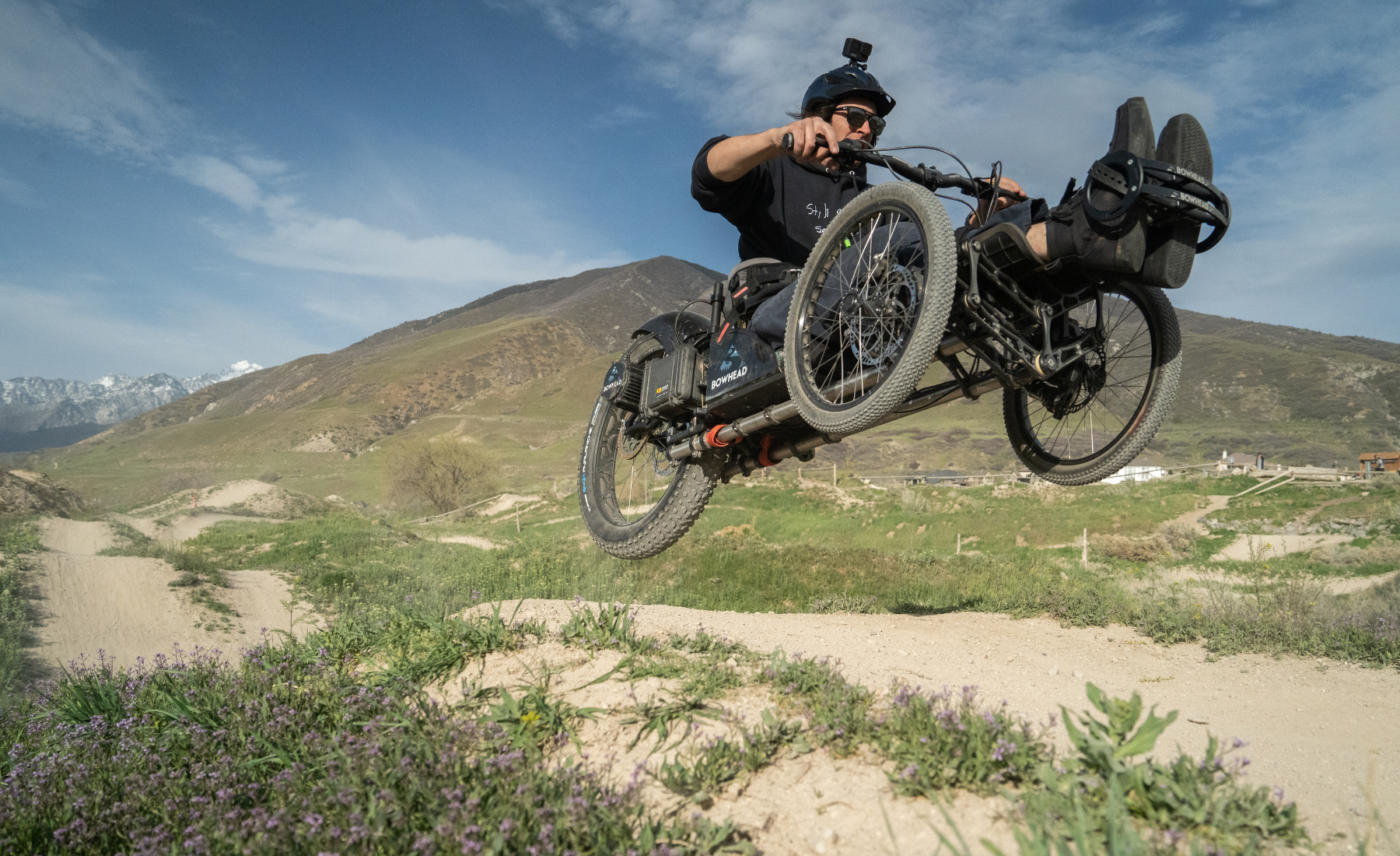
ADAPTIVE BIKES & RENTALS
In terms of adaptive bicycles, Brian confesses there is a huge amount of variance in the types of adaptive bicycles available to support individuals with a great diversity of needs. There are recumbent and keeling hand cycles, e-bike assist cycles, bucket bikes, recumbent trikes, tandem mountain bikes and adaptive mountain bikes. If you want to rent adaptive gear, don't miss this article about all the orgs offering adaptive equipment rentals.
ADAPTIVE MTB TRAIL RECOMMENDATIONS
Brian recommends first doing a bit of research and also checking out the TrailForks app before heading out on any ride. TrailForks has a handy filter you can apply to view trails suitable for adaptive riders.
Brian does have a word of warning though, "The info is only as useful as the quality of data submitted by the app users." Currently there isn't a ton of diverse input and only a few members of the adaptive community are active on the app. Brian encourages people to submit as much qualitative data (i.e. specific mileage, exact width of the trail, camber of trail, pictures of areas that may be harder for adaptive riders to navigate, etc.) as possible. The more information we as a community can provide, the better the decision making process will be for everyone who wants to use the trails.
Not every trail will be appropriate for every adaptive rider. For example, this could be the case due to cycling ability level, the camber or width of the trail, or the type of disability or adaptive equipment a cyclist is working with. The more we come together to add info, the better off the adaptive community will be! On TrailForks, some users have provided a short summary and rating for adaptive riders (see below).
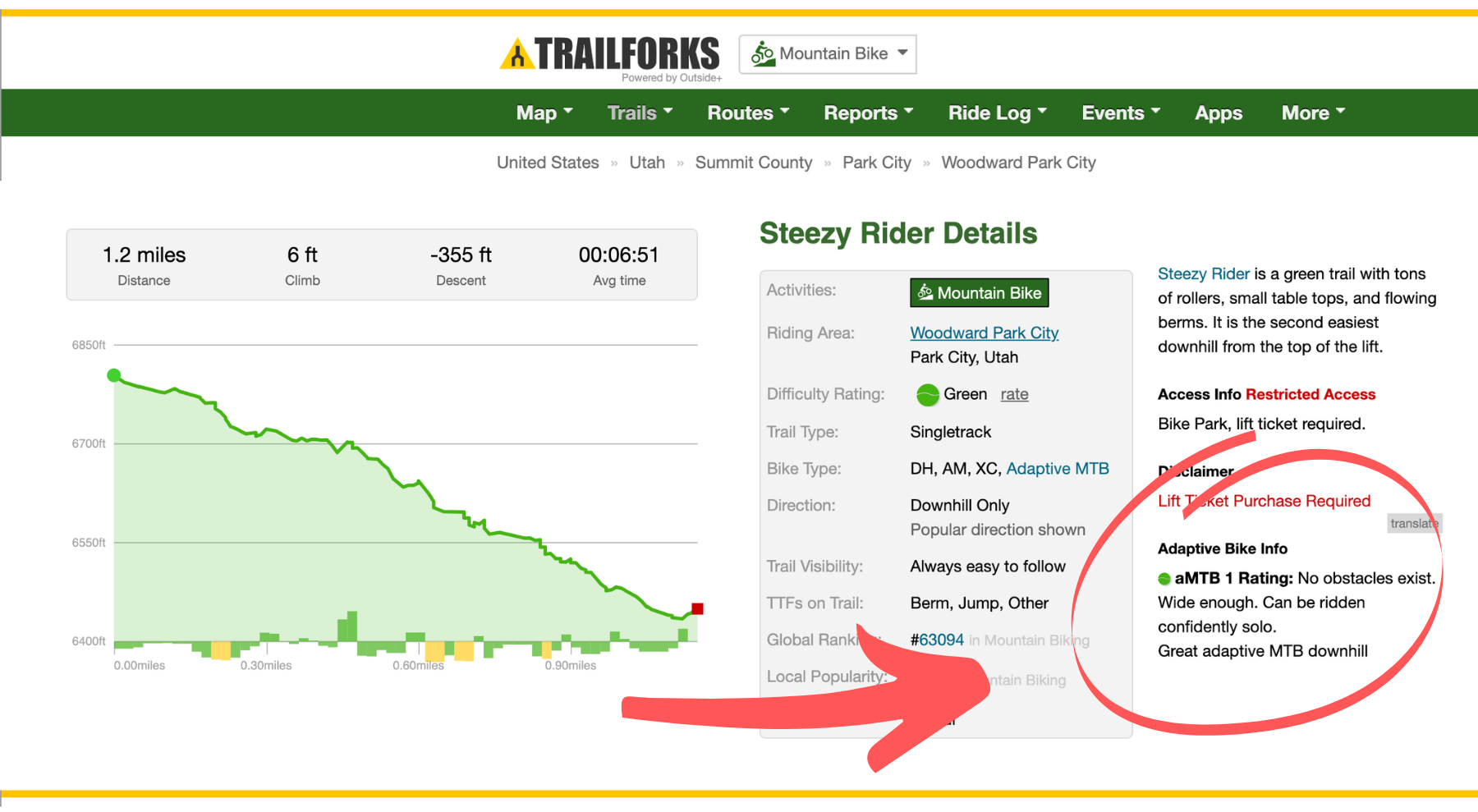
More advice from Brian: there can be big differences between an "Adaptive Trail" and an "Adaptive Friendly Trail." A trail designated Adaptive Friendly may be good for many riders but not suitable for all adaptive riders. It could be off-camber in places, contain rock gardens, or require a spotter. If you're unsure or lack info, give a few trails that are purpose built to meet the needs of adaptive equipment a go (examples below). 
Woodward Park City Bike Park
An awesome place to start is the Woodward Park City Bike Park located near Summit Park. In the summer months, Woodward's ski slopes melt into a berm-filled wonderland serviced by a four-person chairlift (lift tickets are required). The downhill flow trails are modern and cut wide enough to accommodate adaptive equipment and the way they hug the mountains curves will leave mountain bikers whooping in glee. Quite a few of the local organizations host group rides, clinics and ladies' nights staffed by instructors and volunteers who can serve as spotters.
A great place to start is EZPZ which is unsurprisingly the easiest downhill trail from the top of the Hot Laps chairlift. The berms have been built high but there is a huge turning radius around the curves that will be appropriate for those newer to mountain biking. There are no obstacles and it can be confidently ridden without a spotter.

Steezy Rider is another green trail with a bit more action. There are rollers, small table tops and more berms to navigate and it's a great step up from the terrain you'll encounter on EZPZ. There are no obstacles on this trail and it can be ridden without a spotter. You can choose to catch air or not over the rollers and tabletops, depending on speed.
Parley's Way is the next step up, a blue-rated, intermediate trail. It has large berms, table tops, straightaways where you can pick up speed, rollers, and step-on, step-offs that you can ride or ride around. There are obstacles on this trail so a support rider is recommended. The berms will be tighter and faster than what is encountered on the green-rated trails.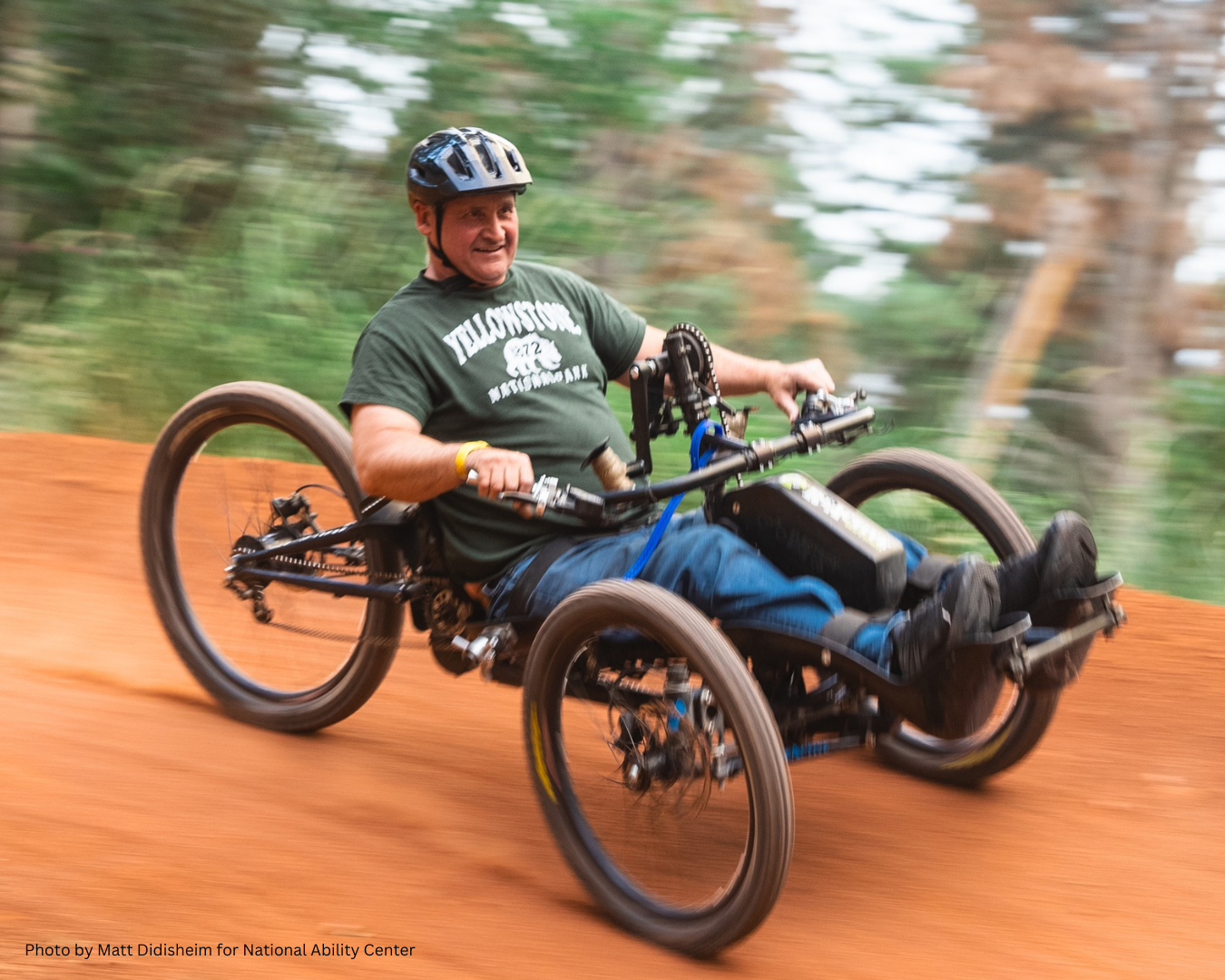
Round Valley
Round Valley in Park City is a year-round recreation hotspot amongst undulating hills of sagebrush and mountain scenery in Park City, Utah. There are countless singletrack trails spread out over 2,100 acres in addition to a wide multi-use soft-surface and paved trail. There are multiple access points and parking areas to the trail system and Brian reports that the majority of trails in this network are either fully adaptive or adaptive-friendly.
For true cycling beginners, Ability Way is a great choice. This gravel road departs from the National Ability Center (NAC) and can be accessed from the Quinn's Junction Trailhead. The trail joins Matt's Flat and does feature one a small climb/drop with a total of 100 feet in elevation change. The trail is wide, on camber and can confidently be ridden without support.
The P-Dog Loop, starting from the NAC, is a green-rated trail that was cut and built for adaptive riders. The trail climbs 395 feet and then descends 388 feet over the course of 4.6 miles. The route stitches together numerous trails, so peep TrailForks to ensure you're on track.
Brian recommends PorkUclimb to DownDog which contains a combo of blue and green terrain ratings. It features a 48-inch wide trail with about 400 feet of climbing and a relatively mellow downhill that is manageable for adaptive riders featuring gentle grades and smooth descents. The loop is approx. 5 miles and should be used in one direction. It includes a total of 14 trail segments, so grab information on TrailForks here.
Butterfield Canyon
In partnership with Salt Lake County Parks and Rec and Wasatch Adaptive Sports the Butterfield Canyon trails system in Herriman was specifically designed from the ground-up to suit those with adaptive equipment. It's a fantastic place for adaptive riders to enjoy the mountain scenery with views of the Wasatch and the Kennecott Copper Mine. Park at the Butterfield Trailhead Regional Park which offers 16 miles of multi-use trails.
Start out on green-rated Lucky Boy, a popular one mile singletrack trail from the parking area that is primarily used as an uphill trail with 340 feet in elevation change. There are no obstacles and it can be ridden solo up to Apex which is a blue-rated trail with berms and tabletops. An alternate route down is Juniper which is a very wide trail with moderately flowing downhill and a few obstacles, a spotter is recommended.
Bingham is a very smooth, green trail that is 36" or wider that offers a more circuitous path than Galena Gulch. Bingham has 86 feet in elevation change compared to Galena's 200 feet. Copper Rise is a super wide trail that climbs from a five-way intersection to a radio tower. There are some steep and punchy sections but the trail remains on camber with regions of mild exposure, a spotter is recommended.
More advanced riders can pedal on out to the Butter Knife section of the Bonneville Shoreline Trail (BST) which connects the Butterfield Canyon trail network to the Yellow Fork trails. Obstacles do exist and it's recommended to have a support rider. The track is typically 30-40" wide and mostly on camber but the exposure is notable in some spots. There is a hairpin berm near Yellow Fork Ridge that may present issues pedaling uphill and a spotter will be needed.
Solitude Bike Park
Solitude Mountain Resort debuted six miles of new downhill freeride trails for their bike park in autumn of 2023. In addition, a few new trails will grace the slopes in summer 2024 thanks to the hard work of the ski area's trail crew. Wide, modern flow trails are mostly suitable for adaptive riders and the trails are serviced by the Moonbeam chairlift (lift ticket required). Brian has recently checked out this newer trail network at Solitude and reports that it's "Fun, fun fun!"
Motherload is the easier, green-rated trail with great flow. It descends over 700 feet for 2.3 miles and features fun berms on the lower half of the trail. The next step up is blue-rated Cobalt Cruise, though it has a few doubles which can be tough on adaptive bicycles. Both trails are between 36-52" wide and mostly on camber. Brian reports that some riders may struggle with off-camber spots where the trails intersect with dirt access roads; newer riders may need a spotter here.
Draper's Corner Canyon
Wasatch Adaptive Sports has worked directly with Draper City to advise on the Little Valley trails within the Corner Canyon trail network. A great place to start is the Draper Cycle Park at the Skills Park Trailhead. Here a number of short trails link together where riders can hone their techniques before heading out for the hills. There are approx. two miles of trails with cyclocross features such as stairs and a flyover, pump tracks, skill zones, jump loops and short downhill flow trails.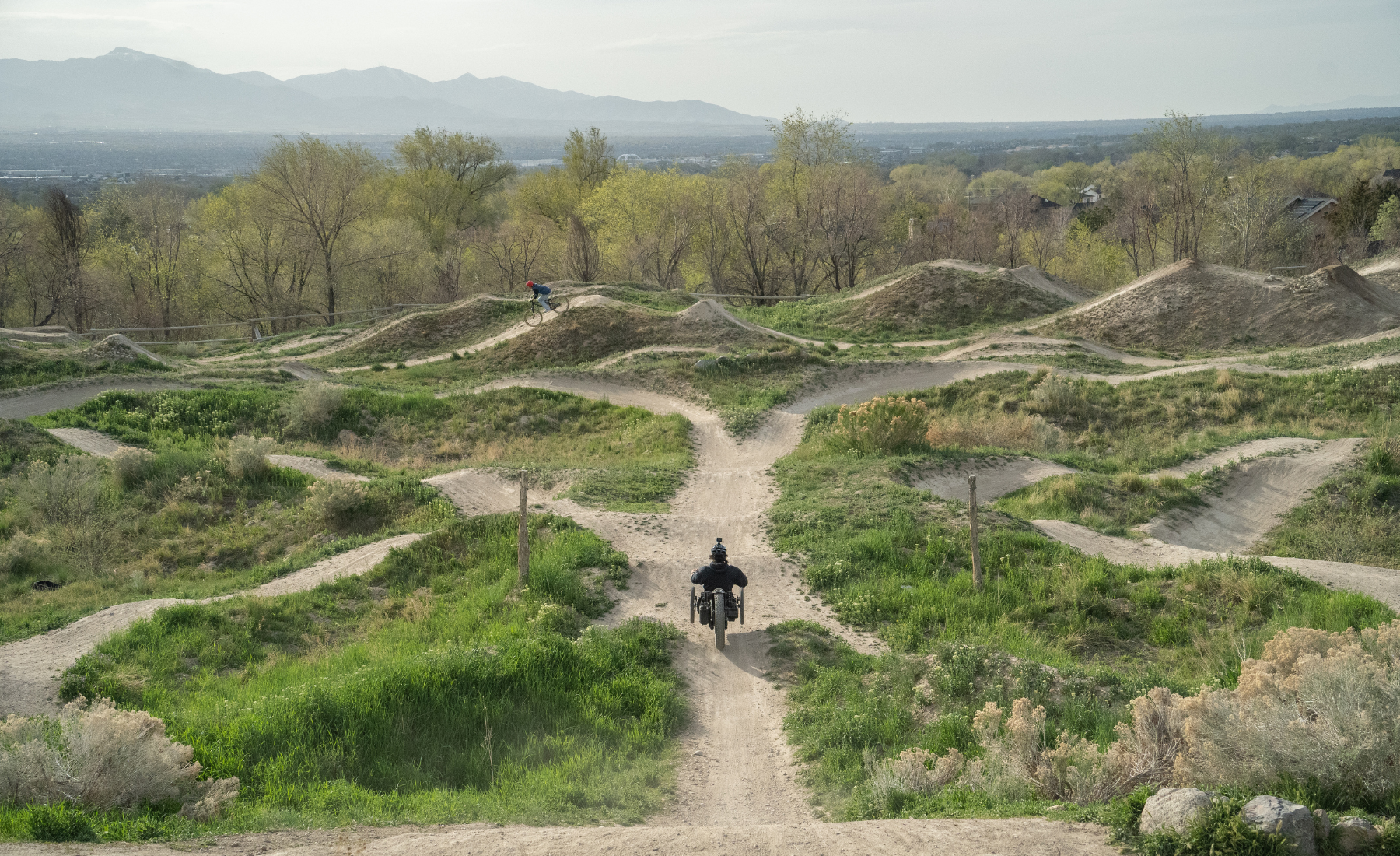
The Little Valley trail system comprises a series of learning loops meant for beginning and intermediate riders. Grades are mild, climbs are gentle and the surfaces are mostly smooth. Each trail is about a quarter mile long and you can link up the various options to create longer loops. There are designated downhill trails so you need not worry about hikers and it's an efficient way to bust out numerous practice laps.

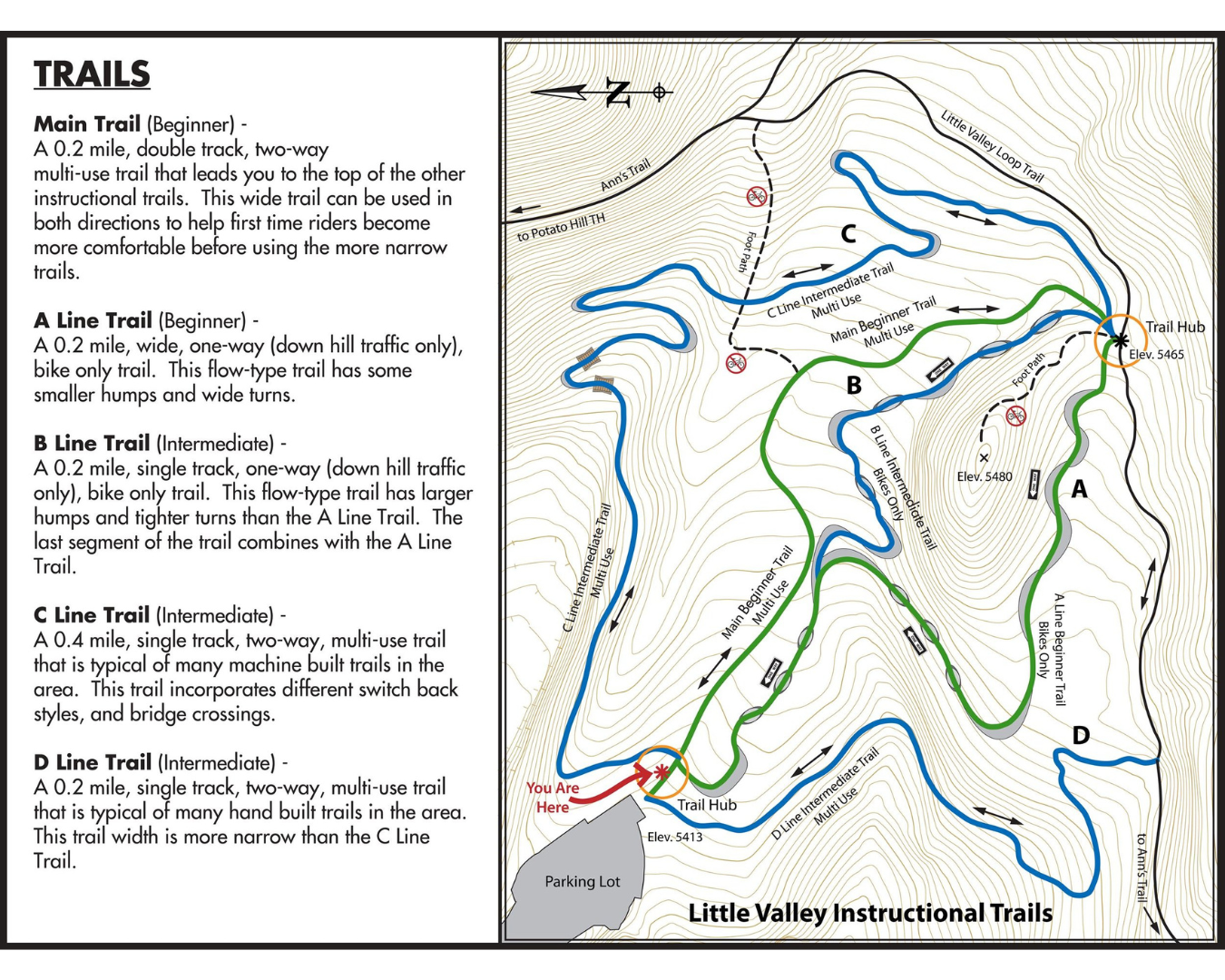
Advanced riders like Brian might enjoy the Rush trail, further up the mountain at the Peak View Trailhead. The trail is narrower up top but widens out and allows for speed on lower Rush. There are jumps, kickers and countless sizable berms. There are technical sections and you may find break bumps when entering turns. A support rider is highly recommended as there are obstacles and a few off-camber zones.
